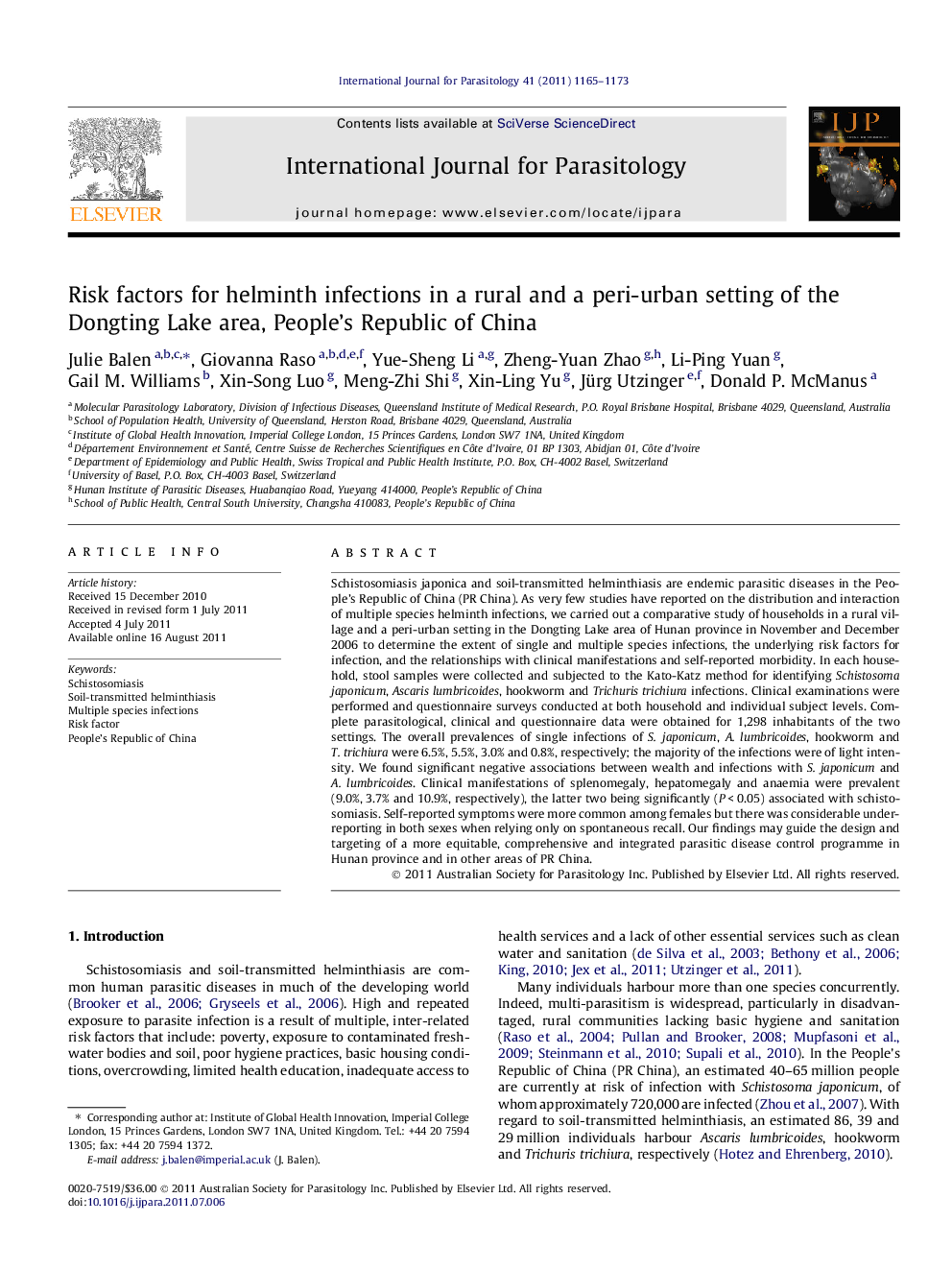| Article ID | Journal | Published Year | Pages | File Type |
|---|---|---|---|---|
| 2436190 | International Journal for Parasitology | 2011 | 9 Pages |
Schistosomiasis japonica and soil-transmitted helminthiasis are endemic parasitic diseases in the People’s Republic of China (PR China). As very few studies have reported on the distribution and interaction of multiple species helminth infections, we carried out a comparative study of households in a rural village and a peri-urban setting in the Dongting Lake area of Hunan province in November and December 2006 to determine the extent of single and multiple species infections, the underlying risk factors for infection, and the relationships with clinical manifestations and self-reported morbidity. In each household, stool samples were collected and subjected to the Kato-Katz method for identifying Schistosoma japonicum, Ascaris lumbricoides, hookworm and Trichuris trichiura infections. Clinical examinations were performed and questionnaire surveys conducted at both household and individual subject levels. Complete parasitological, clinical and questionnaire data were obtained for 1,298 inhabitants of the two settings. The overall prevalences of single infections of S. japonicum, A. lumbricoides, hookworm and T. trichiura were 6.5%, 5.5%, 3.0% and 0.8%, respectively; the majority of the infections were of light intensity. We found significant negative associations between wealth and infections with S. japonicum and A. lumbricoides. Clinical manifestations of splenomegaly, hepatomegaly and anaemia were prevalent (9.0%, 3.7% and 10.9%, respectively), the latter two being significantly (P < 0.05) associated with schistosomiasis. Self-reported symptoms were more common among females but there was considerable under-reporting in both sexes when relying only on spontaneous recall. Our findings may guide the design and targeting of a more equitable, comprehensive and integrated parasitic disease control programme in Hunan province and in other areas of PR China.
Graphical abstractFigure optionsDownload full-size imageDownload high-quality image (129 K)Download as PowerPoint slideHighlights► Prevalences of Schistosoma japonicum, Ascaris lumbricoides and hookworm were 6.5%, 5.5% and 3.0%, respectively. ► Infections with S. japonicum and A. lumbricoides showed a significant negative association with wealth. ► Self-reported symptoms were more common among females and under-reported when relying only on spontaneous recall. ► Our findings may guide the design of a more equitable, comprehensive and integrated parasite control program in PR China.
